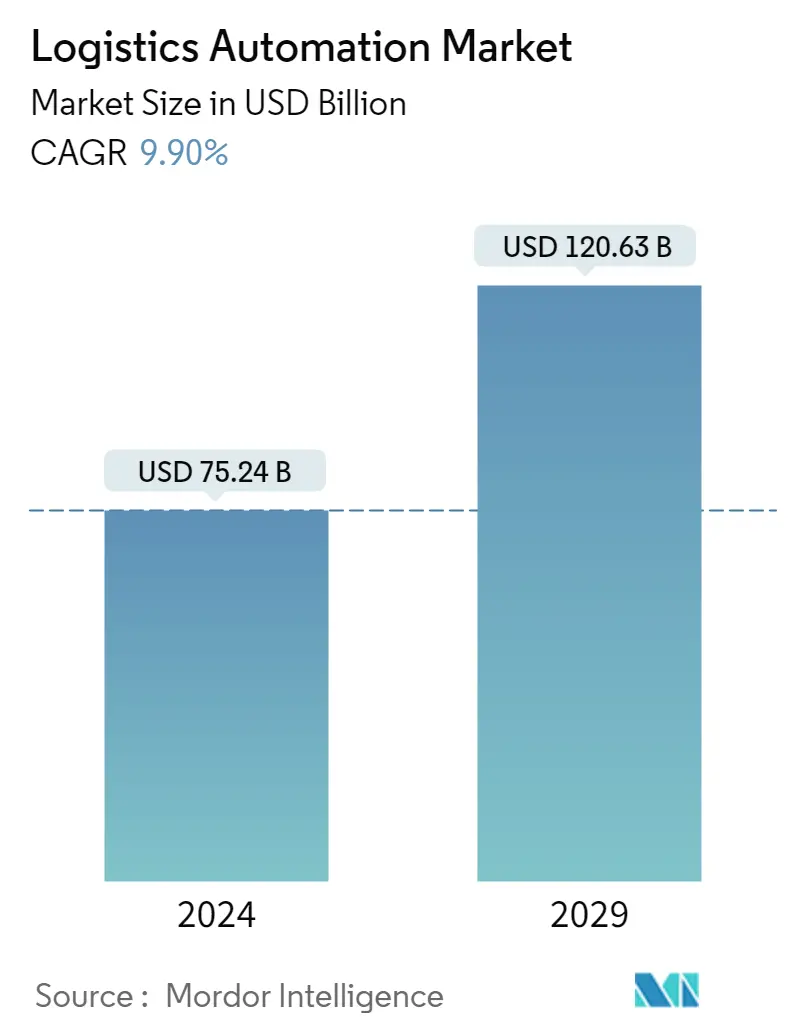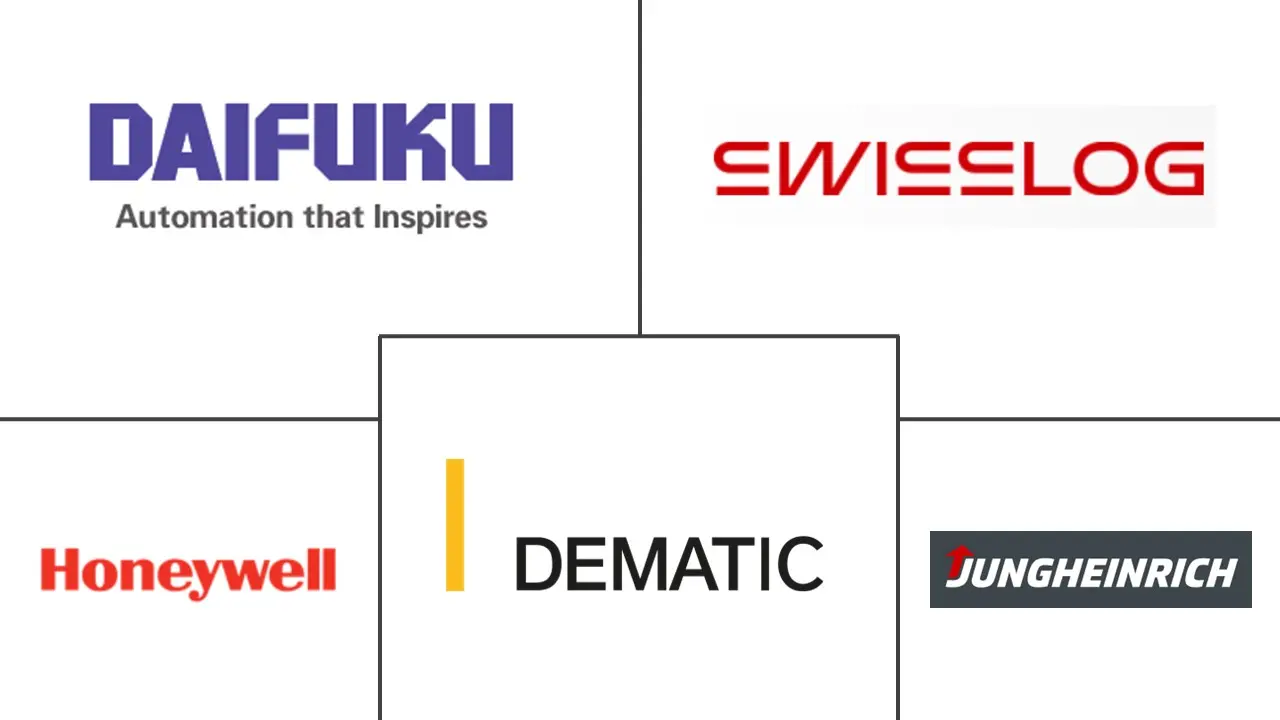Market Size of Logistics Automation Industry

| Study Period | 2019 - 2029 |
| Market Size (2024) | USD 75.24 Billion |
| Market Size (2029) | USD 120.63 Billion |
| CAGR (2024 - 2029) | 9.90 % |
| Fastest Growing Market | Asia Pacific |
| Largest Market | Asia Pacific |
Major Players
*Disclaimer: Major Players sorted in no particular order |
Need a report that reflects how COVID-19 has impacted this market and its growth?
Logistics Automation Market Analysis
The Logistics Automation Market size is estimated at USD 75.24 billion in 2024, and is expected to reach USD 120.63 billion by 2029, growing at a CAGR of 9.90% during the forecast period (2024-2029).
The use of machinery, control systems, and software to enhance the efficiency of operations is called automation in logistics. It usually applies to the processes that need to be performed in a warehouse or distribution center, requiring minimal human intervention. Some benefits of automation logistics comprise improved customer service, scalability and speed, organizational control, and reduction of errors.
- The growth in the e-commerce industry, along with the need for efficient warehousing as well as inventory management across the world, are driving the market. For instance, the retail e-commerce sales in the United States for the second quarter of 2022 was USD 257.3 billion, up 2.7% from the first quarter of 2022, as per the Census Bureau of the Department of Commerce. Also, as per IBEF, the Indian e-commerce market was expected to grow from USD 38.5 billion in 2017 to USD 200 billion by 2026.
- Automation for warehouses provides superior convenience regarding cost-cutting for businesses and helps minimize errors in product deliveries. As per Dalsey, Hillblom, and Lynn, a prominent 3PL company and a significant end-user of warehouse automation solutions, about 80% of warehouses “still operate manually with no supporting automation” despite the advantages.
- Also, the emergence of the Industrial Internet of Things (IIoT) along with the advent of a network of connected systems have enabled industries to perform different tasks, like material batching, picking, ordering, packaging, warehouse security, and inspection, and have helped improve the operational efficiency by huge margins.
- However, with upfront costs being high, the long duration to achieve ROI has been limiting the mass adoption of logistic automation solutions. Developing economies like India and China have been representative of labor-intensive formats. Single investments for a single automation system with additional staff training have been restraining the adoption of the same.
- COVID-19 led warehouse operators to consider accelerating their timelines for adopting automation and robotics. Those who deployed the solutions also demonstrated safer workplaces through the reduction of interactions among workers and enhancing productivity to meet increasing demands for e-commerce.

